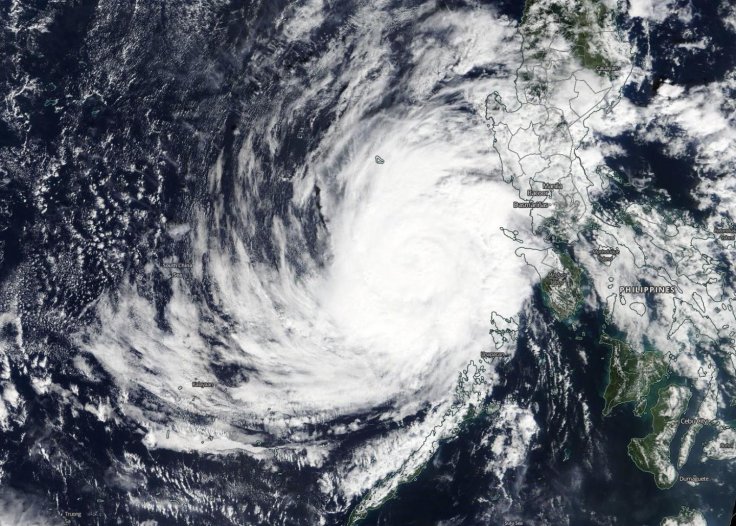The Christmas typhoon that hit the central Philippines retreated as per the NASA satellite images leaving behind 28 people dead as of Friday, and 12 more people missing, said local disaster agency, which has moved in to restore power and repair damaged homes.
Typhoon Phanfone hit late on Tuesday with winds of up to 120 kph (75 mph) and gusts of 150 kph, dumping sheets of uninterrupted rain on these Philippine islands, causing flooding in eight areas. Phanfone is the 21st typhoon to strike the Philippines this year.
Left behind a trail of destruction
About 43,000 people were evacuated to safer places and 142,000 people were impacted by the typhoon, reports Reuters. More than 2,000 homes have been damaged. The relief agency NDRRMC said more than 115 domestic and international flights have been cancelled due to the typhoon. Nearly 16,000 sea travellers, nearly 1,400 rolling cargoes, and 41 ferries were stranded due to the typhoon.
As of 10 am on Thursday, Phanfone was headed to the South China Sea towards Vietnam. The Philippines is one of the most disaster-prone countries in the world mainly due to its location in the Pacific Ring of Fire and Pacific typhoon belt. Landslides and flash floods are common across the Philippines during the rainy season, especially when typhoon hits.
NASA Image

On Friday, Dec. 26, the Moderate Imaging Spectroradiometer or MODIS instrument that flies aboard NASA's Terra satellite provided a visible image of Phanfone that showed the storm maintained its circular shape after crossing the Philippines.
A rounded shape of a tropical cyclone indicates an organized storm, said the agency. It has bands of thunderstorms spiraled into the low-level center of circulation. At 10 a.m. EST on Dec. 26, the Joint Typhoon Warning Center noted that Tropical Cyclone Phanfone was located near latitude 14.0 degrees north and longitude 117.4 degrees east, about 554 nautical miles east-southeast of Da Nang, Vietnam.
Current status
With maximum sustained winds at 75 knots (86 mph/139 kph), Phanfone is moving to the northwest and is forecast to begin a weakening trend and move toward Hainan Island, China. It will take two more days for the storm to weaken to a tropical depression.
Among them was the island of Samar, which bore the brunt of Typhoon Haiyan in 2013, the Philippines' most powerful and deadliest storm on record. It killed more than 6,300 people.
Residents there were clearing debris, with wooden pillars and sheets of corrugated iron roof that were once homes, scattered across the ground. Men pulled tried to recover fishing boats with tangled or damaged outriggers.
Relief work
Samar resident Virgilo Catayas, whose sibling was among those killed by Haiyan, said he lost another to hypertension when Phanphone hit. "We can't really do much if that's what happened, we'll have to accept it," he told broadcaster ABS-CBN. "The important thing is to stay strong," he said, sitting next to a casket.
Television showed minor damage to the airport at Kalibo, an alternative gateway to the holiday island of Boracay, while the disaster agency said 55 schools had suffered some damage. The agriculture department estimated initial damages of 569 million pesos ($11.17 million) mostly to fish farms.
Images on social media showed government workers clearing trees from roads, with a clear blue sky after the storm moved out over the South China Sea late on Wednesday.
(With inputs from Reuters)








